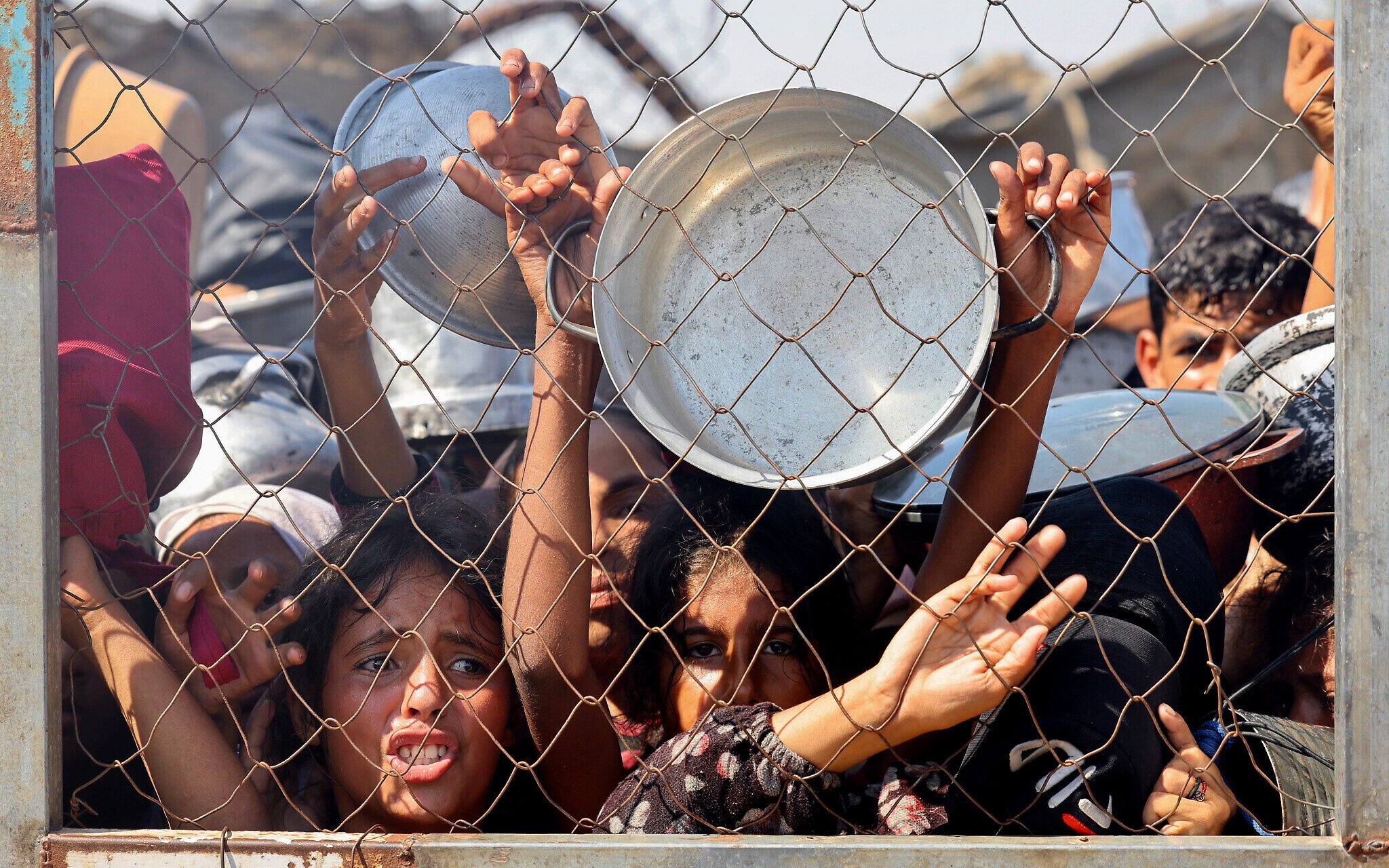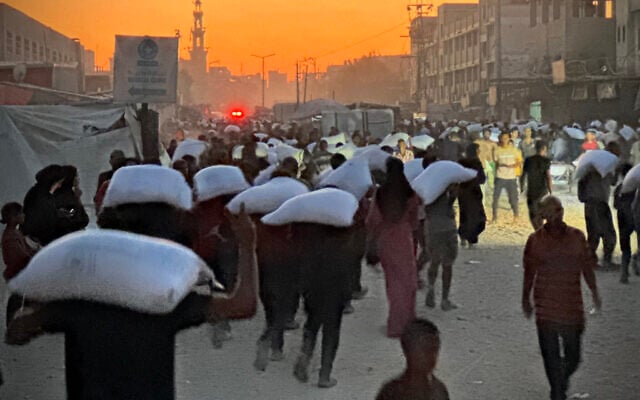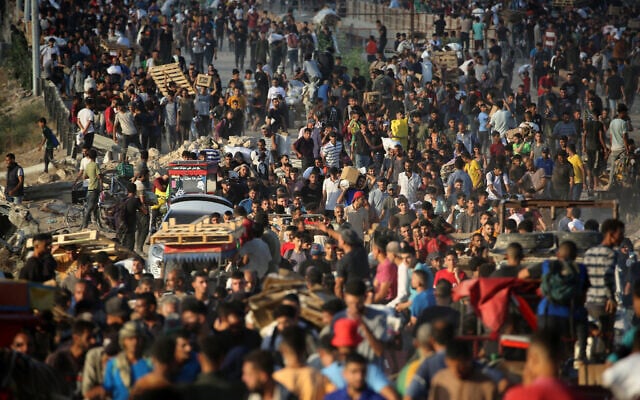



Child malnutrition in Gaza is rising sharply, according to a United Nations study, as the European Union warned Thursday it could take action against Israel if the flow of humanitarian aid does not increase.
A report published on Thursday by the UN Office for the Coordination of Humanitarian Affairs (OCHA) said that, of 56,440 children under the age of five screened in the cities of Khan Younis, Deir al-Balah and Gaza City during the first two weeks of July, almost 5,000 were found to be suffering from severe malnutrition.
That figure represents nearly 9 percent of those examined, compared to 6% a month prior. In February, during an Israel-Hamas ceasefire when a greater quantity of aid was entering the territory, the figure was 2.4%.
The report was the latest sign of the mounting humanitarian crisis in the Gaza Strip, where aid groups and world leaders have protested that starvation is spreading and must be urgently addressed. A European Commission spokesperson said Thursday that despite some Israeli steps toward increasing aid, the situation remains dire and all options remain on the table if Israel does not deliver on an agreement that it made with the EU earlier this month regarding aid.
Israel, which controls much of the enclave’s territory and backs the Gaza Humanitarian Foundation, a controversial American initiative to deliver aid, says it makes extensive efforts to provide aid and denies claims of famine.
It has published photos of aid trucks waiting for pickup in Gaza. The UN has countered that conditions are too dangerous to effectively deliver those supplies.
“Overall, only a massive scale-up in food aid distributions can stabilize the situation and rebuild trust within communities,” the UN report said. “Families generally survive on a single nutritiously poor meal per day, and in some cases, people go entire days without eating.”

The EU-Israel agreement calls for a substantial increase in daily trucks for food and non-food items to enter Gaza, the opening of several other crossing points in both the northern and southern areas, and the reopening of Jordanian and Egyptian aid routes.
But last week a senior Israeli official emphasized that no formal agreement with the EU exists, and that Israel’s actions are determined by its cabinet decisions, not by external guarantees.
“I want to clarify this as clearly as possible: We defined our position in a cabinet decision 11 days ago… We made certain decisions. We do not have an agreement with the EU — we have understandings. There is no formal agreement,” the official said.
The UN report painted a dire picture of hunger in Gaza. It stated that UN-affiliated organizations have documented 20 cases of children dying from severe malnutrition since the beginning of 2025, 13 of them in July alone. The report also found that 838 children screened were suffering from severe acute malnutrition — representing 1.5% of those checked, compared to a rate of 1% in June.
In Gaza City in the north of the enclave, where aid has been particularly hard to come by, the findings were especially severe: 16% of children were suffering from acute malnutrition, and more than 2% from severe acute malnutrition.
The UN did not specify the methodology of the surveys or which specific organizations are collecting the data in Gaza. The sample size may vary from one survey to another.
The survey said malnutrition was “driven by poor diets, inadequate feeding and caregiving practices, and limited access to essential health and water, sanitation and hygiene (WASH) services – all of which are severely compromised in the current context.” Acute malnutrition can have long-term adverse effects as well, the report said.
The OCHA report said that “families are increasingly unable to protect their most vulnerable members from the impacts of food deprivation. Alarmingly, many interviewed households reported that family members risked their lives trying to secure food from militarized distribution sites or humanitarian convoys, often without success.”

The report said that supplies that do enter the Strip are often subject to “looting and offloading of cargo by desperate crowds,” which can lead to violent clashes.
The UN has said more than 1,000 people have been killed at aid distribution centers since May, many of them at GHF sites. Israel says those figures are inflated, though it has acknowledged firing at crowds. It has not provided alternative numbers.
Israel and GHF have accused Hamas of trying to disrupt the aid operation, with the Israel Defense Forces saying the terror group fired a rocket at one of the distribution sites on Wednesday night.
The IDF said the rocket attack “adds to the attempts by the terror organizations, who operate cruelly and systematically, to sabotage the aid distribution sites program… while attempting to disrupt the distribution of humanitarian aid to the residents of the Gaza Strip.”
Emanuel Fabian and Nava Freiberg contributed to this report.
